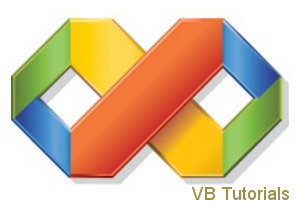VB Tutorials
VB Tutorials
This is your one stop Visual Basic tutorial resource guide that will teach you the basics in Visual Basic programming. This section contains information that will teach you right from scratch, how to make your very first program in Visual Basic.
Windows Controls Tutorial
This guide will give you a bird’s eye view of Windows Controls & its uses. A Windows control or the “control,” is an object in VB that allows users to interact with their computers. These are objects that we see on our screens that can be clicked, moved, or resized.
Controls Messages and Events Tutorial
This tutorial will tell you about control messages & events. They are components of VB that allows users to interact with the computer or a program. Quite often users need for a VB control which has some requirements that need to be met that do not actually exist within the existing or current control set.
Variables and Data Types Tutorial
This guide will tell you everything about variables & data types. Variable declaration plays a big role in programming, and that’s why it is essential that you learn or know how to properly set variables and data types. This guide contains rules and guidelines that you should bear in mind in naming your variables or data types.
Operators Tutorial
A tutorial that tells about the different types of operators that you can use in VB. Like other programming languages, VB has its own operation declaration or symbols that you need to be familiar with. An operator is simply an object or a command that can modify one value or produce a new value.
Logical Comparison Tutorial
A tutorial that tells about logical operations in VB. Sometimes while a person is using your program, you may need to check whether something is true or it is false. This type of operation is performed using operators referred to as comparison operators.
Conditional Statements Tutorial
A tutorial that shows how to use conditional statements. Microsoft Visual Basic uses various conditional statements for almost any situation your computer can encounter. As the application developer, it is up to you to anticipate these situations and make your program act accordingly.
Modules, Functions and Procedures Tutorial
A tutorial that shows to create functions, methods and procedures. A module is a file, also called a source file (as in C/C++, Pascal, and other languages) that belongs to a program and in which you write code. For example, while we were using forms so far, we couldn’t write code on a form. We had to access the Code Editor.
Parent Controls Tutorial
A tutorial that talks about the characteristics of parent controls. An object is referred to as parent when it can carry or host other objects, acting as their parent. When you start the computer, the first object the operating system creates is the desktop window.
List-Based Controls Tutorial
A tutorial that will show you the different types of list based controls. List based controls like combo box, that looks somewhat like a text box that comes with a down pointing arrow on its right side. A combo box by default displays an item. You can change the content of the box, and there are lots of different options that are available.
ADO Fundamentals Tutorial
A tutorial that tells about ActiveX Data Objects. To support databases in MS Windows, Microsoft created a library called ActiveX Data Objects or ADO. ADO was meant to create, administer, and manipulate databases. To use ADO, you had to first create a database using an application such as Microsoft Access or by other related means.


Comments - No Responses to “VB Tutorials”
Sorry but comments are closed at this time.